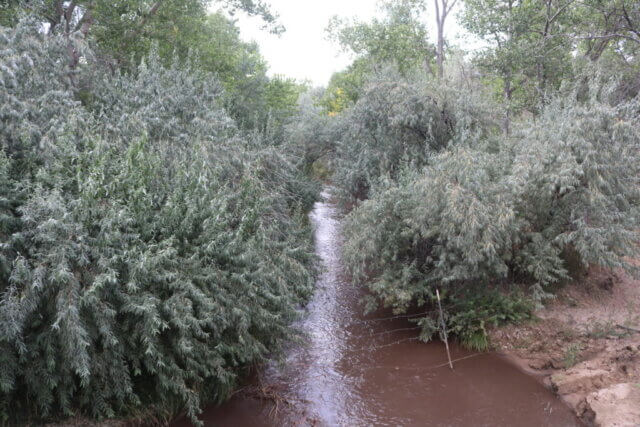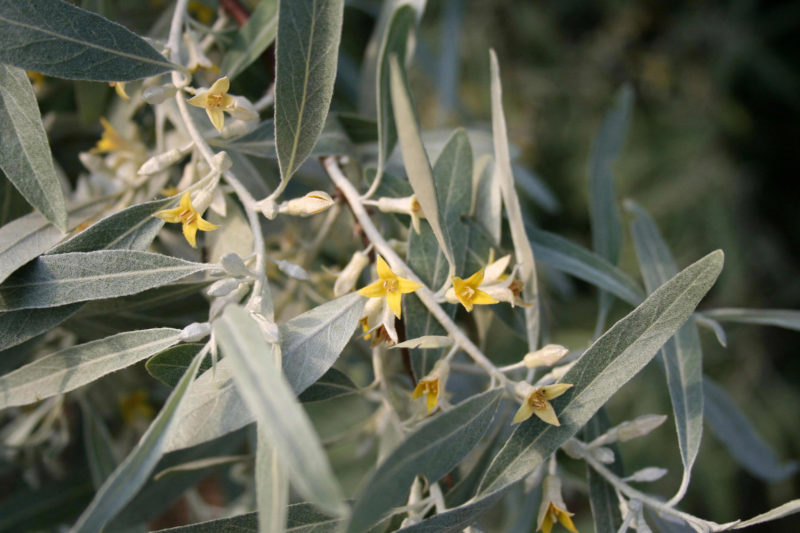Elaeagnus angustifolia
Description
- Small ornamental tree
- Small fragrant yellow flowers
- Silver leaves and black bark
- Edible silver fruit that resemble olives
- Small thorns along branches
Introduction and spread
- Native to central Asia and Eastern Europe
- It is a popular ornamental tree that gardens have planted and now it had jumped the garden fence
- Cut stems grow back vigorously
- Birds and wildlife eat the fruit which allows excellent seed dispersal
Consequences of invasion
- Russian olive is a very hardy plant, therefore it outcompetes native shrubs and plants
- Fends off grazing animals with thorns
- Alters nitrogen in the soil

Credit: Woody Invasives of the Great Lakes
Status in the CKISS region
- Russian olive is currently listed Eradicate on the CKISS Annual Priority List.
- It has not been detected in the Kaslo or Nakusp Invasive Plant Management Areas (IPMAs).
- It has been found with a limited distribution in the remaining IPMAs of our region, where eradication is the goal and is feasible.
- Please report sightings of this species immediately.
- To learn more about how CKISS classifies and manages invasive species, see our Invasive Species Priority Lists page.
Integrated pest management options
Prevention
- Be PlantWise and do not plant or buy Russian olive. Use Grow Me Instead to choose non-invasive look-a-likes.
- Dispose invasive species properly at designated disposal sites.
Mechanical
- Depending on it’s size, the tree can be cut; however, this will need to be maintained yearly.
- Very strong vinegar can be applied over cut stumps to slow growing process.
- Remove seedling early, ensuring all the roots are removed as well
Biological
- No biocontrol currently available in BC.
Chemical
- It may be an option and is best after cutting the trunk off at the base. Contact a professional to see if it’s right for you.


